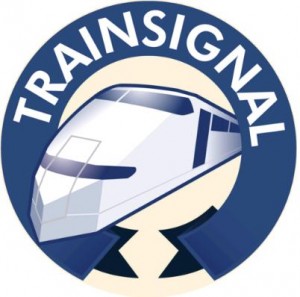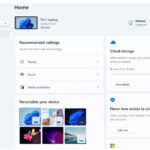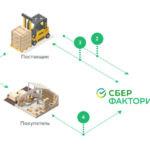
Год выпуска: 2013
Производитель: TrainSignal
Автор: David Davis
Продолжительность: 11:11:45
Тип раздаваемого материала: Видеоурок
Язык: Английский
Стоимость: 1999 рублей.
Описание:
Our Comprehensive VMware vSphere PowerCLI Training Course Will Teach You How to Automate and Customize Your Virtual Environment, Like a vExpert. You’ll Work Hands-On to Automate ESX Configurations, Automate the Creation of Virtual Machines, Automate vSwitches & Datastores Configurations, and Much More!
[wpspoiler name="Подробное описание" ]
Lesson 1 - Getting Started with VMware vSphere PowerCLI Training
In this introductory lesson you will learn about your instructor, why PowerCLI is important, and get a quick overview of what you will be learning in the course.
• Why Learn PowerCLI?
• About Your Instructor
• Course Overview
Lesson 2 - Lab Setup
In this lesson instructor Hal will explain what hardware and software is needed if you would like to follow along with the demonstrations in this course. He will also give you a peek at his own lab’s setup.
• Ground Rules
• Hardware Requirements
• Software Requirements
• Virtualize Your Lab!
• Logical Diagram
• Physical Lab
Lesson 3 - Introduction to PowerCLI
Gain an understanding of what PowerCLI does and how it does it. Get PowerCLI installed in your lab environment so you are ready for the rest of the course.
• What is PowerCLI?
• How Does PowerCLI Work?
• Download the Toolkit
• Installing PowerCLI
• The PowerCLI Console
• The PowerCLI Window
Lesson 4 - PowerCLI Concepts
In this lesson you be introduced to some basic concepts about how PowerCLI works with VMware and PowerShell.
• Support Matrix
• vSphere Object Model
• Connecting to vSphere and vCenter
• PowerCLI Cmdlets
Lesson 5 - Working with Objects in PowerShell
Use properties, methods, and more to process, examine, filter and finally output objects.
• The Pipeline
• Examining Objects
• Filtering Objects
• Exporting Data
Lesson 6 - Managing vSphere Hosts with PowerCLI
This lesson discusses how to query and configure one or many vSphere hypervisors quickly and remotely using PowerCLI.
• Overview of the VMHost Cmdlets
• The Most Important Cmdlet: Get-VMHost
• Adding ESX Server to vCenter
• Managing Host Accounts
• Working with Host Services
• Configuring Network Time Protocol (NTP)
• Configuring Simple Network Management Protocol (SNMP)
• Maintaining ESX Hosts
• Working with Host Profiles
Lesson 7 - Managing Virtual Machines with PowerCLI
You can do VM management tasks using PowerCLI instead of vCenter. A few examples of what will be demonstrated are: reboot machines, modify memory and CPU settings, add a hard disc to a VM, change VM network assignment, disconnect VM CD Drives, and more.
• Overview of the Virtual Machine Cmdlets
• Automating Creation of Virtual Machines
• Managing Virtual Machine Power States
• The Set-VM Cmdlet
• The HardDisk Cmdlets
• The NetworkAdapter Cmdlets
• The CDDrive Cmdlets
• The VMQuestion Cmdlets
• Working with Templates
• Working with Snapshots
• Performing vMotion and svMotion
• Executing PowerCLI Scripts in Virtual Machines
Lesson 8 - Managing Virtual Networks with PowerCLI
This lesson begins with a tutorial of virtual networking. We then talk about all the cmdlets you can use to manage your virtual network, including the host network and host network adapters, virtual switches, distributed virtual switches and virtual portgroups.
• Virtual Networking in a Nutshell
• Overview of the Virtual Networking Cmdlets
• Managing the Host Network with the VMHostNetwork Cmdlets
• Working with Host Network Adapters with the VMHostNetworkAdapter Cmdlets
• The Get-VMHostNetworkAdapter Cmdlet
• The New-VMHostNetworkAdapter Cmdlet
• The Set-VMHostNetworkAdapter Cmdlet
• Working with Virtual Switches with the VirtualSwitch Cmdlets
• The New-VirtualSwitch Cmdlet
• The Set-NicTeamingPolicy Cmdlet
• Working with Distributed Virtual Switches
• Working with Virtual Portgroups
Lesson 9 - Managing Storage with PowerCLI
There are over twenty cmdlets in PowerCLI that cover storage-related topics. This lesson covers all the layers of storage, start at the host level and moving through the storage subsytem, storage adapter, wire protocol, SCSI LUN, physical disk and VMFS partition level and ending at the datastore level.
• From Host to Datastore, a Journey
• Overview of the Storage Cmdlets
• Working with the Storage Subsystem
• Working with the Host Bus Adapters
• Configuring iSCSI Using PowerCLI
• Creating a New iSCSI Target Connection
• Working with Disks, LUNs, and Partitions
• Modifying LUN Multipath Policy
• Examining Disks and Partitions
• Managing Datastores
• Using the Datastore Provider and Introducing the VIM Providers
• Copying Files Between Datastores
Lesson 10 - Managing High Availability and Clustering with PowerCLI
In this lesson, you will learn how to use high availability clusters to minimize downtime in case of a host or VM outage and how to use VMware dynamic resource scheduling (DRS) to automatically distribute workloads across a cluster.
• What is VMware High Availability?
• What is VMware Dynamic Resource Scheduling?
• Overview of the HA and DRS Cmdlets
• Managing Clusters
• Creating an HA / DRS Cluster
• Adding an ESX Host to a Cluster and Modifying Cluster HA Settings
• The DRS Cmdlets
• Creating a DRS Affinity Rule
• Configuring Virtual Machine Cluster Settings
• Working with Resource Pools
• Advanced Cluster Configuration
Lesson 11 - Managing vCenter with PowerCLI
This lesson shows how to use PowerCLI to manage and inventory objects like datacenters and folders. Also, see how to set permissions for those objects.
• Overview of the vCenter Cmdlets
• Working with Containers
• Working with Custom Attributes
• Managing vCenter Access Control
Lesson 12 - Reporting with PowerCLI
In this lesson you will walk step-by-step through the process of generating useful reports of your virtual environment using PowerCLI. Also, you will take a detailed look at the various ways to get data out of vSphere and vCenter. Plus, you will work hands-on to generate several reports that will be useful in managing your ever-changing virtual landscape.
• A Special Note About ESXi
• How to Create Great Reports – A Brief Overview
• Requirements
• Interpret the Data
• Automate! If You Repeat It, Script It!
• Using PowerCLI to Create Reports
• Report 1: Host Inventory
• Using VMHostReport.ps1 Script
• Report 2: VM Inventory
• Using VMReport.ps1 Script
• Sending an E-mail with VM Report
• Report 3: Storage Utilization
• Using Export-DSReport.ps1 Script
• Using Search Datastore Function
[/wpspoiler]


